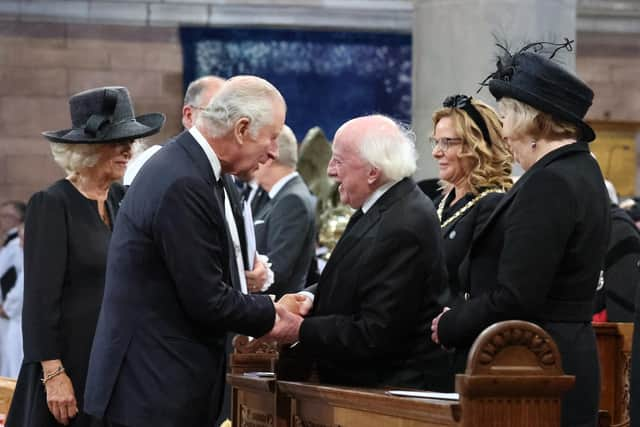Queen Elizabeth II death: Visit sends message Northern Ireland is integral to UK
King Charles travelled to Hillsborough and later on to a religious service of thanksgiving in Belfast as part of an imperative for any new British Monarch – to visit all four corners of the United Kingdom after succeeding to the throne.
In a sense his journey across the Irish Sea as part of a gruelling schedule of events ahead of his mother's funeral on Monday, actually transmits a 'Unionist' message to the wider world – that Northern Ireland is still an integral part of the UK despite a 35-year armed campaign to force the region out of the British State and into a United Ireland.
Advertisement
Hide AdAdvertisement
Hide AdSome commentators have tried over the past week to portray the death of the Queen as some sort of political "earthquake" for Northern Ireland's Unionists. But King Charles's arrival in the Co.Down village, which has historic links to British royalty, as well as Belfast signals the opposite. It is the institution rather than the individual wearing the crown that represents the symbolic glue that helps hold an albeit, currently fragile UK together.


Of course, the occasion evoked memories of the Queen's historic visit to the Irish Republic in 2011 and the following year when she shook hands with former IRA chief-of-staff and then deputy first minister Martin McGuinness in a Belfast theatre.
The Queen received much posthumous praise yesterday for her pioneering trip to the Republic and later shaking the hand of a man who was the IRA's supreme commander in 1979 when they murdered Prince Philip's uncle, Lord Mountbatten.
One of the obvious, surface narratives of yesterday's visit was how comfortable Sinn Fein figures felt in the company of a British Monarch. But it would be naive to then assume unity, sweetness and light is going to break out in the suspended Stormont Assembly after this national period of mourning is over.
The battlelines over the post-Brexit agreement with the EU; the universal opposition of Unionists to a trade Protocol they say puts a border in the Irish Sea between Great Britain and Northern Ireland and Irish Nationalist insistence that this deal cannot be dumped to placate unionist parties are already drawn.
After the Queen is laid to rest and the UK returns to some state of normality, the truce at Stormont will be over. And no amount of platitudes about going the extra mile for peace (especially in the absence of war and its unlikely return) will prolong that political ceasefire.
Comments
Want to join the conversation? Please or to comment on this article.